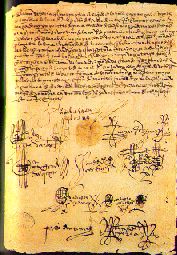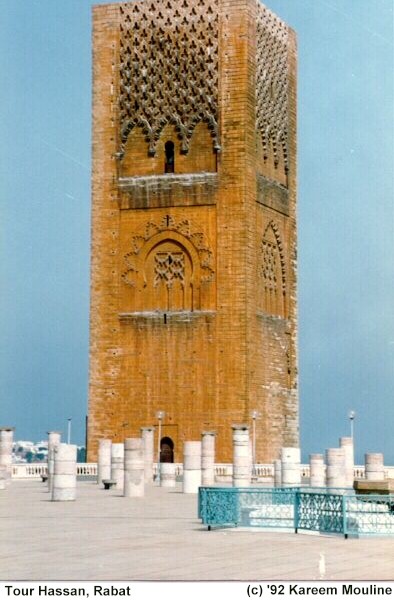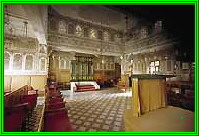

DESCRIPTION OF THE SHORT TERM COURSE
At the same time, the Christian kingdoms of Castile and Aragon, were creating a corpus of
vernacular literature different from the rest of Christian Europe. The evidence of this
vernacular literature appears as early as the 10th century in the genre of the muwashshaj in
both Hebrew and Arabic. To the Latin influence of the Benedictine monks, Christian
letters added the stories and philosophies transmitted from India and Persia by Arabic
 classical writers. Jewish writers also chose the Old Castilian
romance to render the traditional wisdom literature based on
religious teaching. This gave rise to masterpieces like the joyful
Libro de Buen Amor (Book of Good Love), the stories of the
Libro del Conde Lucanor, and many others reaching early
modern times and traveling across the Atlantic with the first
waves of immigration into the Americas. The corpus of
traditional ballads known as the Romancero is perhaps the
longest living example of the interdependence of these three
cultures, still surviving in our days in disparate places such as
Zagreb, Salonika, New York City, or the Barlovento region of
Venezuela. In all these places women and men still sing about
the fall of Granada, or the betrayal of Roland at Roncesvalles.
classical writers. Jewish writers also chose the Old Castilian
romance to render the traditional wisdom literature based on
religious teaching. This gave rise to masterpieces like the joyful
Libro de Buen Amor (Book of Good Love), the stories of the
Libro del Conde Lucanor, and many others reaching early
modern times and traveling across the Atlantic with the first
waves of immigration into the Americas. The corpus of
traditional ballads known as the Romancero is perhaps the
longest living example of the interdependence of these three
cultures, still surviving in our days in disparate places such as
Zagreb, Salonika, New York City, or the Barlovento region of
Venezuela. In all these places women and men still sing about
the fall of Granada, or the betrayal of Roland at Roncesvalles.
The term convivencia has been gaining currency to express the historical circumstance of Medieval Spain and the existence within it of three official religions, three cultures, and three literary traditions. Yet the history of Medieval Spain was violent and in the end, with the arrival of the Renaissance, Humanism, and the national states, Jews first, and Muslims later, fell victim of massive expulsions. The two non-Christian minorities took their few possessions and their long tradition to Northern Africa. In Morocco, Sephardim Jews, the descendants of those expelled in 1492, continued their ancestral culture within a Muslim society.
 The off-campus part of this short term unit will start in Spain's
capital, and then move southwards into Morocco. As an
illustration of our purpose to teach students about cultures that
see one another as so different but which share so much in
common the fateful date of 1492 can serve as a focal point. In
January the walls of the Alhambra in Granada saw the end of
Al-Andalus, when Queen Isabella and King Ferdinand
accepted the surrender of its last Muslim king, Mohamed XII.
In late March the edict of expulsion of the Jews is issued, and
by late August it is fully carried out, thus marking the official
end of Jewish culture in Spain. Earlier that same month,
Columbus had set sail to India through the west. When he
reached a place known as Cubanacán, he set a diplomatic
mission headed by don Luis de Torres, a converso (Christian of
Jewish descent), who addressed the local dignitaries that came
to his encounter in the Arabic language. The use of Arabic would be banned a few years
later in Spain, where it had been the language of culture for eight hundred years. Arabic,
spoken by a Jew who converted to Christianity under coercion, is introduced in the New
World. We cannot think of a stronger emblem of cultural dislocation in the 15th century.
The off-campus part of this short term unit will start in Spain's
capital, and then move southwards into Morocco. As an
illustration of our purpose to teach students about cultures that
see one another as so different but which share so much in
common the fateful date of 1492 can serve as a focal point. In
January the walls of the Alhambra in Granada saw the end of
Al-Andalus, when Queen Isabella and King Ferdinand
accepted the surrender of its last Muslim king, Mohamed XII.
In late March the edict of expulsion of the Jews is issued, and
by late August it is fully carried out, thus marking the official
end of Jewish culture in Spain. Earlier that same month,
Columbus had set sail to India through the west. When he
reached a place known as Cubanacán, he set a diplomatic
mission headed by don Luis de Torres, a converso (Christian of
Jewish descent), who addressed the local dignitaries that came
to his encounter in the Arabic language. The use of Arabic would be banned a few years
later in Spain, where it had been the language of culture for eight hundred years. Arabic,
spoken by a Jew who converted to Christianity under coercion, is introduced in the New
World. We cannot think of a stronger emblem of cultural dislocation in the 15th century.


Morocco and the rest of the Maghreb was never a separate political entity from Spain during the Middle Ages. After the fall of the Cordoba Caliphate in 1033, Al-Andalus became a suzerainty of the Moroccan Al-Moravids, and later the Al-Mohads. Architecture, decorative arts, musical traditions, and literature are among the areas where the continuity between Jewish and Muslim Spain and Morocco are more evident. The historical relations between the two sides of the Straight of Gibraltar have been continuous and intense since historical memory exists. The past becomes present with great ease: the last Muslim king of Granada, Mohammed XII (Boabdil) took refuge in Morocco after 1492. Almost five hundred years later, General Franco and his cohorts launched his Moorish troops against the Spanish Republic in "defense of Christianity" at the beginning of the Spanish Civil War.
The remnants of Medieval Spain continued their existence to a large extent in Moroccan society. A considerable part of the course will be devoted to the study of cultural dislocation, both in the Medieval past and in the present. Cultural and social dislocation between Spain and Morocco is not a thing of the past. After 1492 entire populations were enslaved and transported by force from one country to the other. The 19th century saw the invasion by Spanish troops of Northern Morocco. In the 20th century, the Spanish Protectorate of Northern Morocco produced profound changes in the colonized society as well as in the political system of Spain. The first independentist movement against Colonia rule in Africa came by the hand of Ab-del-Krim, the first independentist leader in modern Moroccan history. After independence in 1956 a constant flow of emigration to Europe has changed the economic and political relations between the two countries.
 The visit to Spain and Morocco will include a series of
lectures and discussions on the contemporary reality of both
countries. We consider this component an essential part of
the course. Visits to historical monuments and religious
shrines are meaningless without considering the people who
have preserved them as part of their identity and historical
memory. A series of lectures and discussions on
contemporary issues affecting Spain and Morocco will take
place during the off-campus part of the course. The study of the past is as important as the
study of the contemporary political and ideological uses of the past. Both during the
on-campus portion of the course and during the visit to Spain and Morocco, there will be a
series of lectures and discussions on contemporary issues affecting the two countries to be
visited.
The visit to Spain and Morocco will include a series of
lectures and discussions on the contemporary reality of both
countries. We consider this component an essential part of
the course. Visits to historical monuments and religious
shrines are meaningless without considering the people who
have preserved them as part of their identity and historical
memory. A series of lectures and discussions on
contemporary issues affecting Spain and Morocco will take
place during the off-campus part of the course. The study of the past is as important as the
study of the contemporary political and ideological uses of the past. Both during the
on-campus portion of the course and during the visit to Spain and Morocco, there will be a
series of lectures and discussions on contemporary issues affecting the two countries to be
visited.
FOR MORE INFORMATION, CONTACT ONE OF THE INSTRUCTORS:
A Short Bibliography
a) List of the works from which the students will read excerpts and selected passages:
Constable, Olivia Remie (ed.) Medieval Iberia. Readings from Christian, Muslim, and Jewish
Sources. University of Pennsylvania Press, 1997.
Ar-Rusafí de Valencia. Poemas. Madrid: Hiperión, 1980.
Averroes (Ibn Rushd). On the Harmony of Religion and Philosophy. London: International
Commission for the Translation of Great Works, 1926.
Ben Sahl de Sevilla. Poemas. Madrid: Hiperión, 1983
Conde Lucanor y otros cuentos medievales. Barcelona: Bruguera, 1970.
García Gómez, Emilio. Cinco poetas musulmanes. Buenos Aires: Espasa-Calpe Argentina,
1945.
Ibn Hazm de Córdoba. El collar de la paloma. Madrid: Alianza Editorial, 1970.
Ibn Quzman de Córdoba. Poesías. Madrid: Editora Nacional, 1980.
Juan Manuel, Infante de Castilla Don. El Conde Lucanor. Madrid: Castalia, 1971.
Maimonides (Mosés ben Maimón). A Maimonides Reader. New York: Behrman House,
1972.
---. The Book of Women. Book IV of The Code of Maimonides. Yale University Press, 1972.
Martínez de Toledo, Alfonso. Arcipreste de Talavera o Corbacho. Madrid: Castalia, 1970.
Millás Vallicrosa, J.M. Literature hebraicoespañola. Barcelona: Labor, 1968.
Nagrela, Samuel Ibn. Jewish Prince in Moslem Spain: Selected Poems of Samuel Ibn
Nagrela. The University of Alamba Press, 1973.
The Penguin Book of Hebrew Verse. New York: Penguin Books, 1981.
Ruiz, Juan, Arcipreste de Hita. Libro de Buen Amor. Madrid: Castalia, 1980.
b) Other critical works to be consulted by the students
Beinart,H Conversos On Trail By the Inquisition, 1981
Caspi M,M, Oral Tradition and Hispanic Literature, 1995
Castro, Américo. España en su historia: cristianos, moros y judíos. Buenos Aires: Editorial
Losada, 1948.
---. The Structure of Spanish History. Princeton University Press, 1954.
Collins, Roger. Early Medieval Spain: Unity in Diversity, 400-1000. New York: St. Martin's
Press, 1983.
Convivencia: Jews, Muslims, and Christians in Medieval Spain. New York: G. Braziller in
association with the Jewish Museum, 1992.
Fletcher, Richard. Moorish Spain. University of California Press, 1992.
Gampel ,B The Last Jews on Iberian Soil...1497/98
Garber, Jane The Jews in Spain. Free Press, 1992
Gilman, Stephen. The Spain of Fernando de Rojas.
Glick, Thomas F. Islamic and Christian Spain in the Early Middle Ages. Princeton
University Press, 1979.
Green Otis H. Spain and the Western Tradition. The University of Wisconsin Press, 1966.
MacKay, Angus. Spain in the Middle Ages: From Frontier to Empire, 1000-1500. New
York: St. Martin's Press, 1977.
Malino , F The Sephardic Jews in Bordeaux, 1978
Menéndez Pidal, Ramón. The Spaniards in their History. London: Hollis and Carter, 1950.
Monroe, J Islam and Arabs in Spanish Scholarship, I970
Netanyahu, Benzion. The Origins of the Inquisition in Fifteenth-Century Spain. New York:
Random House, 1995.
Reilly, Bernard F. The Medieval Spains. Cambridge University Press, 1993
---. The Contest of Christian and Muslim Spain: 1131-1157. Cambridge, MA: Blackwell,
1992
Yerushalmi Y.S. From Spanish Court to Italian Ghetto, 1971